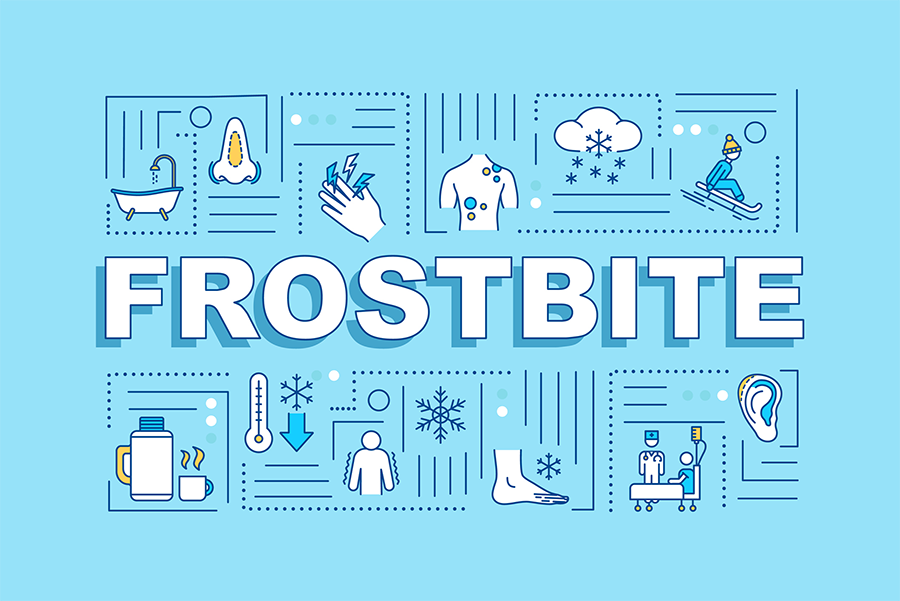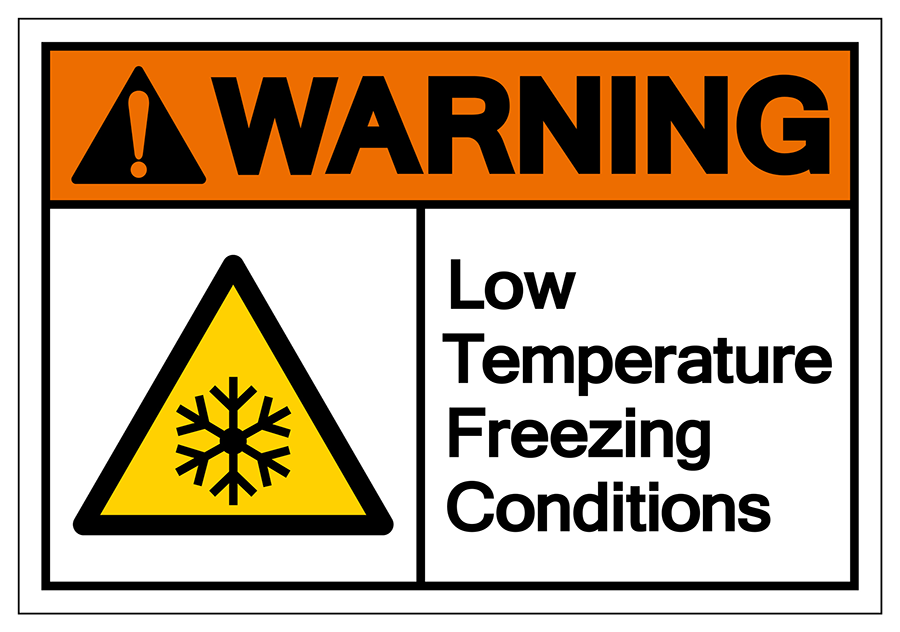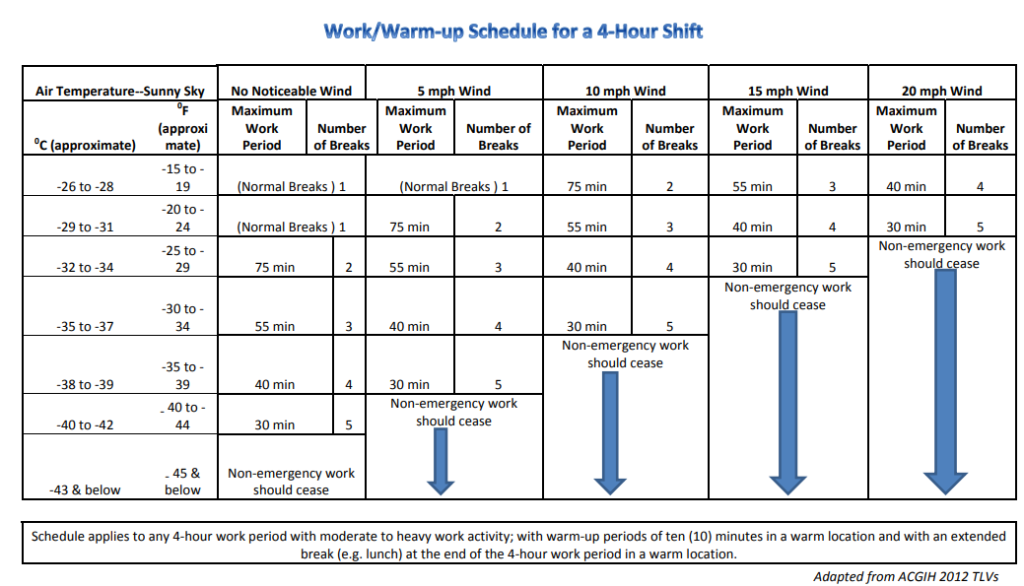Cold Stress and its Safety Measures
Cold weather can be more than a seasonal inconvenience; it can threaten your health and well-being in ways that go beyond mere discomfort. When temperatures plunge, especially below freezing, the risk of cold stress becomes a serious concern, affecting how your body functions and responds to prolonged exposure. In severe cases, cold stress can lead to hypothermia, frostbite, and other health complications that compromise safety. For those working outdoors or in poorly insulated environments, these dangers are even more pronounced.
Construction workers, snow removal crews, agricultural employees, and utility workers, among others, often face heightened risks due to constant exposure to harsh weather. Recognizing these dangers and taking preventive measures are essential to staying safe. Equipping yourself and your team with practical cold stress prevention knowledge can be the difference between a safe winter season and one marked by avoidable health risks.
What is Cold Stress?
Cold stress occurs when the body is unable to maintain its normal temperature due to prolonged exposure to cold environments. This condition can lead to various health complications, including frostbite, hypothermia, and even death. Recognizing the risks and signs of cold stress is essential to preventing severe consequences.
Who is Affected by the Environmental Cold?
Environmental colds can affect any worker exposed to cold air temperatures and put them at risk of cold stress. As wind speed increases, the cold air temperature feels even cooler. This increases the risk of cold stress to exposed workers. Those working outdoors, such as recreational workers, snow cleanup crews, construction workers, police officers, and firefighters, are especially at risk. This includes professionals such as;
- Construction workers
- Outdoor maintenance staff
- Agricultural workers
- Police officers
- Utility and power line workers
- Snow removal personnel
Each of these professionals needs to work in an environment where cold stress could be a significant hazard as part of their jobs. Exposure to environmental cold may also affect workers in transit, baggage handlers, water transportation, and landscaping services. Even workers in support roles for oil and gas operations are also at risk.

Symptoms of Cold Stress
Recognizing cold stress symptoms early on is crucial for prompt intervention. Here are some of the symptoms to watch for:
Hypothermia
- Shivering
- Slurred speech
- Slow breathing
- Fatigue and confusion
Frostbite
- Redness or pain in the affected area
- Numbness
- Hard, pale skin
- Blisters in severe cases
Trench Foot
- Numbness and tingling
- Swelling and pain
- Blisters or ulcers
Risk factors for cold stress include:
- Wetness/dampness, inadequate warm dressing, and body exhaustion
- Preexisting health conditions such as hypertension, hypothyroidism, and diabetes
- Poor acclimatization to cold weather
Preventing Cold Stress
Employers need to know the wind chill temperature to assess worker exposure risk to cold stress. Employers must also monitor workers’ physical condition during tasks. They must pay special attention to new workers who are not used to working in the cold or returning to work after leave.
OSHA cold stress guidelines do not have a specific standard that covers working in chili weather environments. However, under the Occupational Safety and Health Act (OSH Act), employers have a duty to protect their workers from known hazards that are causing or likely to cause death or serious injury at the workplace. So, the OSH Act indirectly addresses these hazards.
Workers can also enroll in short cold stress awareness courses to learn how to operate safely in colder working environments. Along with the English language, cold stress training online is also available in Spanish, French, German, Chinese, Japanese, Italian, Korean, and Portuguese.
According to OSHA cold stress guidelines, employers should monitor the physical condition of their workers. They should schedule frequent short breaks in warm, dry areas for their employees. This will allow them to keep their bodies warm. Employers should also try to schedule work during warmer hours of the day. They should have a buddy system in place. When employees are working in pairs, if one of them is suffering from cold stress, the other employee can help him get medical attention.
Employers should provide warm and sweet drinks for employees. This will allow them to maintain a healthy body temperature and a healthy energy level. Employers should also discourage the consumption of alcoholic drinks at the workplace. They should also provide heaters in cold weather areas to maintain a safe and comfortable working environment.
Employers should train workers on how to deal with cold stress.
- Recognizing the environmental and workplace conditions that can lead to cold stress.
- The symptoms of cold stress, how to prevent cold stress, and what to do to help those who are affected.
- How to select proper clothing for cold weather conditions.
Taking special measures can also help reduce the risk of cold stress. Here are several techniques recommended by OSHA:
- Wear Proper Clothing: Dress in layers to trap body heat and wear waterproof, insulated outer layers to protect from wind and moisture.
- Take Regular Breaks: Schedule regular breaks in a warm area to help maintain body temperature and prevent the onset of symptoms.
- Stay Hydrated: Drink warm, non-caffeinated fluids to stay hydrated and support normal body functions.
- Limit Exposure Time: Try to minimize the time spent in freezing temperatures whenever possible, especially during extreme cold weather.
- Monitor Weather Conditions: Keep an eye on weather forecasts and be prepared for sudden drops in temperature or unexpected storms.
- Recognize and Treat Symptoms Early: Educate yourself and others about the early signs of cold stress and seek medical attention as soon as symptoms arise.
- Use Protective Equipment: Consider using items such as hand and foot warmers, hats, gloves, and earmuffs to shield extremities from the cold.
By following these tips and staying informed, you can significantly lower the risk of cold stress and maintain a safer, healthier workplace during the colder months.

Wind Chill Guide for Employers
Outdoor workers exposed to cold and windy conditions are susceptible to cold stress. Both air temperature and wind speed affect how cold they feel. Wind Chill is the rate of heat loss from the body caused by low air temperature and high wind speed. The Wind Chill Temperature is a single value that includes both air and wind speed. For example, when the air temperature is 40°F, and the wind speed is 35mph, the wind chill temperature is 28°F. This measurement is the actual effect of the environmental cold on the exposed skin.
The National Weather Service (NWS) Wind Chill Calculator is a useful tool to determine the wind chill temperature. You only need to input the air temperature and wind speed, and it will calculate the wind chill temperature.
The American Conference of Governmental Industrial Hygienists (ACGIH) has developed the following Work/Warm-up Schedule for a 4-hour shift. It takes both air temperature and wind speed into account. This is a useful guide on scheduling work breaks and ceasing non-emergency work.

Conclusion
Understanding and mitigating cold stress is extremely important for protecting workers exposed to cold environments. Employers must implement comprehensive measures, including monitoring conditions, scheduling breaks, and providing proper training.
Adhering to OSHA guidelines and using tools like the Wind Chill Calculator can help manage risks effectively. Ultimately, a proactive approach can prevent cold-related illnesses and injuries. This will make sure your workplace stays productive and safe despite hostile weather conditions.






